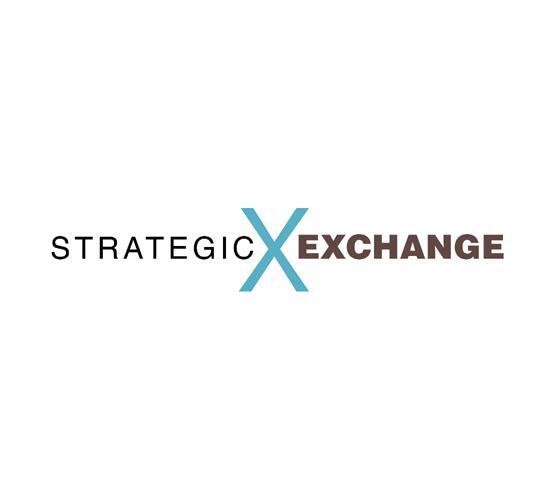Strategic Exchange: Strap on your running shoes to outpace the competition – Nov 2023
By Kemp Harr
Most everyone is in budget planning mode for next year, and in almost every market segment, demand for flooring products is forecasted to move sideways for at least the first half of next year.
We were as shocked as you were to read that new-home sales in September jumped 34% versus the previous year. Be careful about giving that number too much credence. The fact is big builders are slowing down, and starts are trending negative. It is true that some of the big builders bought down their homebuyers’ mortgage rate from 7.5% to 5% to move some units, but that was expensive, and they probably cut back on the quality of the finishes to pay for it.
The real headline in the housing market as it relates to generating flooring demand is the sluggishness of the existing-home market. The September number for existing-home sales took the annual rate down to 3.9 million units. The last time the annual rate was that low was in 1995, when the population was much smaller. The two main drivers for reduced churn in the housing market are inflated prices and high interest rates-two factors that aren’t going to change anytime soon. Those of you in the retail business know that the buying and selling of homes is the number one driver for the type of remodeling activity that triggers a flooring purchase.
Right before press time, we learned that Q3 GDP jumped to 4.9% from 2.1% in Q2. News that the economy is growing should put smiles on our faces, right? Not if it’s going to make the Fed continue to raise interest rates.
It’s no secret that the commercial market has been driving much of the growth we’ve seen in the flooring business in 2023. While the Architecture Billings Index has been moving sideways for most of the year, it took a substantial dip in September to 44.8. This is a leading indicator that pretty accurately predicts what the market will look like a year from now.
I ran into Kermit Baker, chief economist for American Institute of Architects, and taped an interview with him that I think everyone who’s in a planning mode should listen to. We talk about what might happen in the commercial office space sector when leases come due and companies right-size to their post-Covid needs. We also talk about a potential downturn in the multifamily housing sector.
Most businesspeople know that the only way to grow your business in a down market is to take marketshare. And the easiest way to do that is to discount your price, right? NOT! The right way to do it is to become invaluable to your customer. We’ve all heard about the guy who stopped to put his running shoes on when he heard the bear crashing through the woods toward him. He knew that all he had to do was outrun the others in the group. In similar fashion, the best way to expand your customer base is to make sure your offering outpaces your competition’s. And it’s important to remember that there are far more important elements of a transaction than a discount price.
AHF PRODUCTS’ ACQUISITION OF CROSSVILLE
It’s pretty big news that AHF Products has entered the porcelain tile business by purchasing Crossville. From just a top-line revenue perspective, Crossville adds $225 million to AHF’s existing $850 million to put it at almost $1.1 billion in annual sales. Just as importantly, it diversifies AHF’s product offering-making it a top five player in the tile market. It’s important to note that ceramic tile is the number one flooring surface in the global market, and Crossville has been a brand leader in this sector for years.
For those of you who follow Mohawk’s three segments, its ceramic business is now bigger than its Flooring North America business. For years, after its initial investment in Daltile, Mohawk has continued to invest in the global ceramic business.
Another point worth noting is that this is yet another example of a family-owned business selling out to a private equity-owned business, in this case after 37 years of nurturing the business by taking the long view and reinvesting in future growth. Crossville was owned by the Curran family, and the controlling interest of AHF Products is held by Paceline Equity Partners.
Another dimension of this deal is Crossville’s network of 30 company-owned distributors that go to market under the Crossville Studios brand. It will be interesting to see how AHF puts them to work to potentially open up more points of distribution for its other product lines.
The ink hadn’t been dry on this deal for more than a week when I started hearing about AHF’s expanding plans to bring Crossville into the mix at the NFA and with other buying groups.
RECENT MEETINGS
In the later part of October, I got the opportunity to attend the fall meetings for both Starnet and the NFA.
Starnet met in Louisville, Kentucky and hosted about 280 people at its event. Aside from usual economic and motivational talks was a focus on AI and the digital tools that commercial contractors can use to streamline their business. The social highlight of the meeting was a late afternoon bourbon tasting event at Millionaires Row in the Churchill Downs.
The NFA meeting was held at the Coeur d’Alene Resort in Idaho. It hosted about 220 people.
If you have any comments about this month’s column, you can email me at kemp@floorfocus.com.
Copyright 2023 Floor Focus
Related Topics:Starnet, Daltile, Mohawk Industries, AHF Products, Crossville, National Flooring Alliance (NFA)
